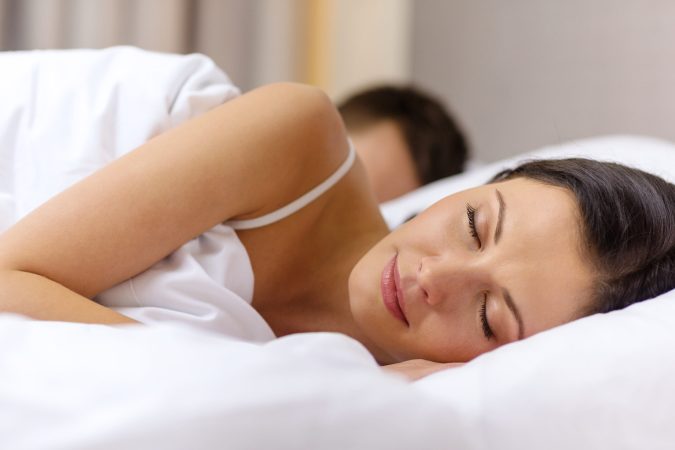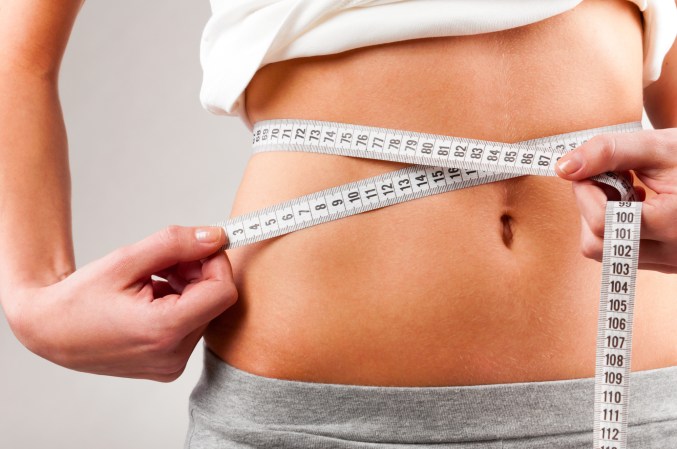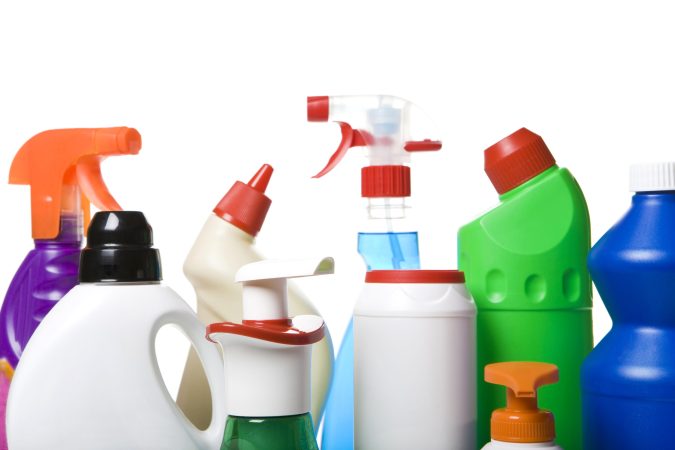

Want to put some pep in your step this year? Just swish some oil around in your mouth. Or get a lymphatic massage. Or guzzle some apple cider vinegar. Or lock yourself in a sauna. Or all. Or none. Or…
If you’re confused, you should be. The array of so-called health cures that claim to purify your system, cleanse your aura, and just generally give you healthier vibes can be as dizzying as your desire not to get off the couch. But do any of these viral “cleanse” tactics actually help your body?
Here’s the scoop on four of the most hyped detoxing techniques.
Apple cider vinegar
No list of popular cleanses would be complete without the mother of them all: apple cider vinegar. Its proponents say that the tangy brew’s “mother”—the cloudy combo of bacteria and yeast that gives the liquid its funky appearance—is a cure-all. Whether you want better skin or a more efficient metabolism, say ACV acolytes, you’d better make sure to chug some of the stuff on a regular basis. As a result, its popularity has soared in recent years.
“Everybody thinks ACV can do everything,” says Liz Weinandy, lead outpatient dietician at the Ohio State University Wexner Medical Center. “But it’s really hard to say.”
Weinandy points to the lack of convincing studies on apple cider vinegar consumption. Many of the results that do exist come from experiments conducted in rats, chickens, shrimp, and other animals, she explains, and may not apply to humans at all; others have small sample sizes or questionable study design. While some data have suggested beneficial impacts on glucose metabolism and weight loss, other studies have found no impact compared to a placebo. And the mechanism by which this fermented fruit could affect bodily systems is still unclear.
Fermentation is one big reason people hit the powerfully scented bottle—the bacteria contained in raw apple cider vinegar is touted as a powerful probiotic that can improve gut health. But the bacteria in the vinegar may do less good than you think; researchers are unclear on whether it can survive its sloshy journey down the digestive tract, which would qualify it as a true probiotic, or whether the microorganisms are gobbled up by digestive enzymes en route to the gut.
In fact, chugging ACV may actually do more harm than good: It’s been tied to tooth enamel erosion, gastrointestinal issues like reflux, and reduced potassium levels. So think before you drink—you might be sipping your bank account dry while actually hurting your health.
“It goes back to basic nutrition,” says Weinandy, who recommends upping fiber and pursuing small changes instead of fast fads. “People think they have to do something extraordinary, but our bodies have their own natural cleansing methods.”
[Related: 5 nutrition goals that are better than weight loss]
Oil pulling
The practice of swishing oil around in your mouth originated in India as an Ayurvedic folk remedy. These days, it’s bandied about as a miraculous way to cleanse the body of, you guessed it, toxins. Advocates say that swirling coconut, sesame, or other oils in your mouth for 15 to 20 minutes a day can whiten teeth, freshen breath, prevent cavities, and suck various toxins out of your body thanks to the power of fat molecules that bind to bad stuff.
But the jury is out on how effective this practice really is. Though proponents claim it’s powerfully detoxifying, those benefits have yet to be shown in clinical trials. Many attempts to research oil pulling have been flawed: One 2017 review found that of examined 21 studies, only six were designed in a way that could yield accurate data.
There’s slightly more evidence that oil pulling can help oral hygiene, but not much. One oft-cited study from 2008 pitted oil pulling against chlorhexidine mouthwash and found a reduction in mouth bacteria in both groups. But the study was tiny, using a sample of just 20 adolescent boys. Other studies have shown that oil pulling helps people with chronically dry mouths, though only as much as water, and a 2011 study found that several oils used in oil pulling had antimicrobial or antifungal properties when used on oral biofilms in the lab.
But at least for now, mainstream dentists don’t see oil pulling as a good substitute for toothpaste. “Based on the lack of scientific evidence, the American Dental Association does not recommend oil pulling as a dental hygiene practice,” says the ADA on its website. The professional association recommends you stick to the tried and true methods for keeping chompers healthy: brush, floss, and stay away from tobacco.
Aside from the toll oil pulling sessions might take on your morning productivity, there aren’t many documented harms from the practice—so if you want to give it a try in addition to your regular toothbrush routine, you’ll probably be fine. However, topical allergic reactions are worth watching out for if you decide to swish. And one 2014 case study associates lipoid pneumonia—a rare disease that occurs when fat particles enter the lungs—with the practice. You probably know better than to inhale oil, but it’s worth taking extra precautions to avoid any errant chuckles or gasps while your mouth is full of fat.
[Related: The truth about hydration hacks like IV therapies, alkaline water, and more]
Lymphatic massage
If you’re intrigued by the concept of a massage that prompts your body to dispose of everything grody within, you’re not alone. In recent years, a practice known as lymphatic massage has made its way out of doctors’ and physical therapists’ offices and into health spas and DIY TikToks.
The technique involves using a light touch to first activate the lymph nodes. These tiny trash scavengers are a vital part of your immune system, and the idea is to prompt them to process lymph—a truly disgusting fluid made up of white blood cells, the remains of old or damaged cells, various salts and proteins, and intestinal fluid. The nodes filter out bacteria and foreign material in the lymph, then return the good stuff back into your blood.
Lymphatic massage is safe for most people, though it’s not recommended if you have circulation problems, congestive heart failure, or certain infections or kidney issues. But the technique was specifically designed to help people with edema, or swelling, in their extremities, and to combat the inflammation caused by various illnesses and physical ailments.
There’s evidence it helps in those situations. However, if you’re looking for evidence that lymphatic massage can make you lose weight, change the shape of your face, improve your general health, or even cure cancer, as some hucksters would have it, good luck finding it. One systematic review from 2009 called lymphatic drainage in sports medicine contexts—one of its most popular applications— “a clinical art founded on hypotheses, theory, and preliminary evidence.”
Another popular use of lymphatic massage is cosmetic. You’ve probably seen TikTokkers gently stroking their face with jade rollers or gua sha stones. But though the Chinese medicine-derived gua sha technique was associated with increased microcirculation in one tiny study, research remains extremely limited. That said, gentle, self-administered gua sha facials won’t do you any harm.
If you absolutely need lymphatic drainage, you’ll know—and your doctor or physical therapist will likely recommend it. But if you don’t have any health contraindications, you may still find lymphatic massage to be relaxing and slightly de-bloating (though in reality, it’s not pushing any fluid out of your body… just moving it around.)
[Related: The only real way to detox your body]
Saunas
Could better health be as simple as just sweating it out? Plenty of people head to the sauna (or buy one to keep at home) to give that theory a whirl, touting everything from better skin to weight loss as its benefits.
Given the proliferation of terrible-to-middling health advice above, you might be surprised to learn that a sauna sesh can actually benefit your body. Dry saunas raise the pulse and boost circulation, which can promote cardiovascular health and mimic the effects of physical exercise. (For this reason, however, those with existing heart problems should check with their doctor before cranking up the heat.) Regular sauna sessions have been linked to everything from pain reduction in patients with rheumatic diseases like fibromyalgia to a reduced risk of psychosis (at least among Finnish men).
Why does shvitzing help health? Researchers are still looking into the specific mechanisms that make sauna use beneficial, but hypothesize that the heat can trigger everything from hormonal shifts to reduced inflammation.
As with any wellness trend, however, time in a sauna won’t do quite as much as some devotees swear. Sweating a lot can make you look a bit leaner by getting rid of some water weight, but it doesn’t cause permanent weight loss. And that same temporary slimming power can easily make you dangerously dehydrated, which makes it important to drink plenty of water before and after each session. Combining a sauna visit with cocktail hour can exacerbate the risk of dehydration, not to mention injury—in sauna-obsessed Finland, an estimated one in every four burns treated in major hospitals are sauna-related.
But if you stay away from the heat source, put down the booze, and pay close attention to your body’s reactions, a sauna or hot bath can be a great way to heat up your health in the new year.
“Almost everything that goes viral isn’t true,” says Weinandy. But in the case of a good, old-fashioned sweat, saunas are actually kind of worth the hype.







